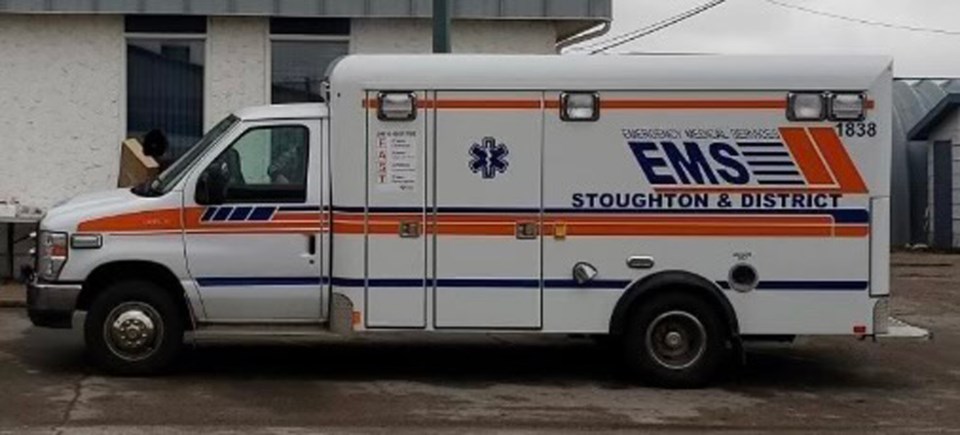Being a first responder is not for the faint of heart. Every call out is different and the first responders never know what they may face when they arrive on the scene of an accident.
Diane Adams has been a first responder for the Stoughton and District Ambulance Service for 20 years.
Born and raised in the Stoughton area, it was her plan to become a nurse out of high school but decided not to and sought employment elsewhere.
She worked in Calgary at a nursing home for five years and upon her return to Stoughton, it was suggested that she become a first responder. Adams works at the New Hope Pioneer Lodge (NHPL) in Stoughton and has been the longest employee there.
Adams took her primary care provider (PCP) course, which was offered through the Sun Country Health Regioon in the early 2000s. It was offered as long as a two-year contract was signed.
She completed this course in 2006 on a part-time basis. Today it needs to be done full-time. She has remained with the Stoughton First Responders service ever since.
There are six other resolute members on this team, and they are emergency medical responders (EMR).
Back in the day, Adams said things were done a little differently as now the rules have changed and there are many things that no longer can be done if a person is an EMR.
Adams said their shifts are long. Often they are on call for 24 hours, and the wage does not reflect the work that they do. She feels that this needs to be changed.
Most of the staff members have other full-time jobs and when they come home from work, will be on call for the ambulance service. This service is a vital part of the community and a service that communities cannot do without.
When Adams is on call, she is prepared to go within minutes. Once she hits the road this is the time she gets herself mentally ready for what might be ahead of her, but she will also talk to her husband for added support.
Once on the scene, it is all work and one’s emotions are put to the side to do what is needed to save someone’s life. Coming from a small community, it is often someone they know, and this can be difficult once they arrive home.
Adams said they have a great support team within the service and often check up on each other to make sure everyone is okay. They also have services that they can call if the burden becomes too much to manage.
In any given month, Stoughton’s ambulance goes out on 35-40 calls. This can be transfers from one hospital to another, or someone from a nursing home needing hospital care.
The severity of the situation, the level of care needed and the location of the patient's doctor will determine which hospital a person is transported to.
If the accident is severe, a call will go to the STARS Air Ambulance or there will be an advance care intercept done in transit. This is when a doctor or PCP meets them on the road, jumps into the ambulance, and continues to its destination.
Adams and her team are always taking courses to improve their education and get the latest information.
Gayla Gilbertson is an EMR with the Stoughton service and she has been accepted to school for the fall to become a PCP, which is needed in the Stoughton community.
Adams said being the only PCP is difficult and 2 PCPs are needed at all times.
“We are in need of more people,” said Adams. A
nyone wanting to get into this line of work can contact Adams at [email protected] and she will gladly answer questions.
It also important that when an emergency vehicle is seen on the road, a person slows down to 60 kilometres and pulls over so that the emergency vehicle can pass safely.
Keep an eye on the rearview mirror in case an emergency vehicle is coming down the road.
Adams said that most people are good for following these rules, but at times they will need to honk their horn at someone who is not moving over or slowing down.




